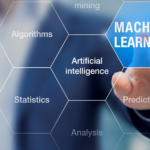Today, almost every large enterprise has virtualized part, or all, of their data centers. With virtualization, IT teams gain access to a huge variety and volume of real-time machine data they want to use to understand and solve the issues in their IT operations environments. However, the complexity of managing virtual IT environments is stressing out traditional IT departments. As a result, IT pros are discovering that the solution lies in the data and in the artificial intelligence-based tools that can leverage it.
Data Science to the Rescue
As worldwide digital data levels continue to climb, companies are working to find the business value in their data, and to adapt their computer science strategies to the evolving data science market. Legacy management and monitoring tools used the same approach they used for physical server environments — that is, by looking at discrete silos (network, storage, infrastructure, application). They used multiple manually-set thresholds to focus on individual metrics — CPU utilization, memory utilization, network latency, etc., within each silo.
This threshold-based approach originated in a relatively static, well-understood physical server environment which has proven ineffective in handling the complexity of today’s virtual environments. Unlike their counterparts in physical server environments, components in virtual environments share host resources, creating complex, highly interdependent relationships between them. They are also highly dynamic, enabling IT to continually create and move workloads across VMs. IT pros can no longer make informed decisions using manual computer science approaches of yesterday and analyzing alerts from a single silo at a time. This is why companies are turning to “data science” approach that leverages sophisticated AI disciplines of machine learning and deep learning to get a holistic, automated solution to eliminate the time-consuming, manual process of problem-solving performance issues and optimizing virtual environments.
Machine Learning Analytics Tools Provide the Answers
Rather than monitoring individual metrics as threshold-based tools do, advanced machine learning-based solutions learn the complex behavior of interrelated components as they change over time. They can consider multiple metrics of related components simultaneously. As a result, they deliver much more precise, accurate information about virtual environments than either primitive machine learning tools or traditional threshold-based tools. Instead of creating “alert storms”, they identify the meaningful incidents associated with abnormal behavior at a specific time of day, week, month and year. And because machine learning is central to the design, there is no manual configuration required. Advanced machine learning solutions, can be up and running in minutes and learning behaviors immediately. As a result, this shift to a data-centric, behavior-based approach has major implications that significantly empower IT professionals. IT pros will always need domain expertise in computer science, but what analytical skills will IT need to become effective in this new AI-driven world?
Instead of spending their days reacting to and reworking application performance issues, IT will shift their focus from diagnosing problems to proactively predicting and avoiding them in the first place. Freed of the need to over-provision to ensure performance and reliability, they will be able to look for ways to optimize efficiency and spend their time focusing on the larger goals at hand. This allows IT to provide true business value, and work on projects that drive company objectives forward. Generally, that kind of value gives IT an important voice in senior management, bringing them into the decision making process and closing the gap between IT and operations. And as IT pros understanding and use of machine learning-based analytics tools advance, they will be on the forefront of building the foundation for automation and the future of the self-driving data center.
Jim’s Bio:
Jim Shocrylas is the Director of Product Management at SIOS. Jim has more than 20 years in the IT industry, most recently as Portfolio Manager for EMC’s Emerging Technologies Division.
 rtual Infrastructures are Too Complex
rtual Infrastructures are Too Complex They automatically deliver fast, accurate solutions to complex problems like root cause analysis, rightsizing, or capacity planning.
They automatically deliver fast, accurate solutions to complex problems like root cause analysis, rightsizing, or capacity planning.